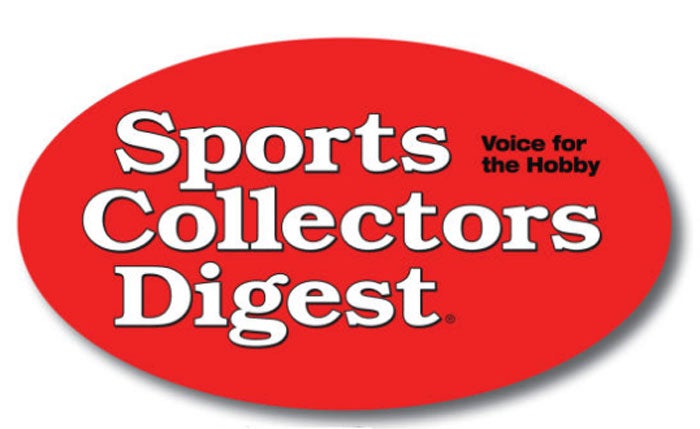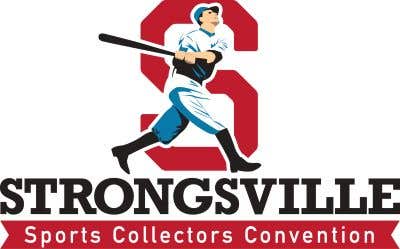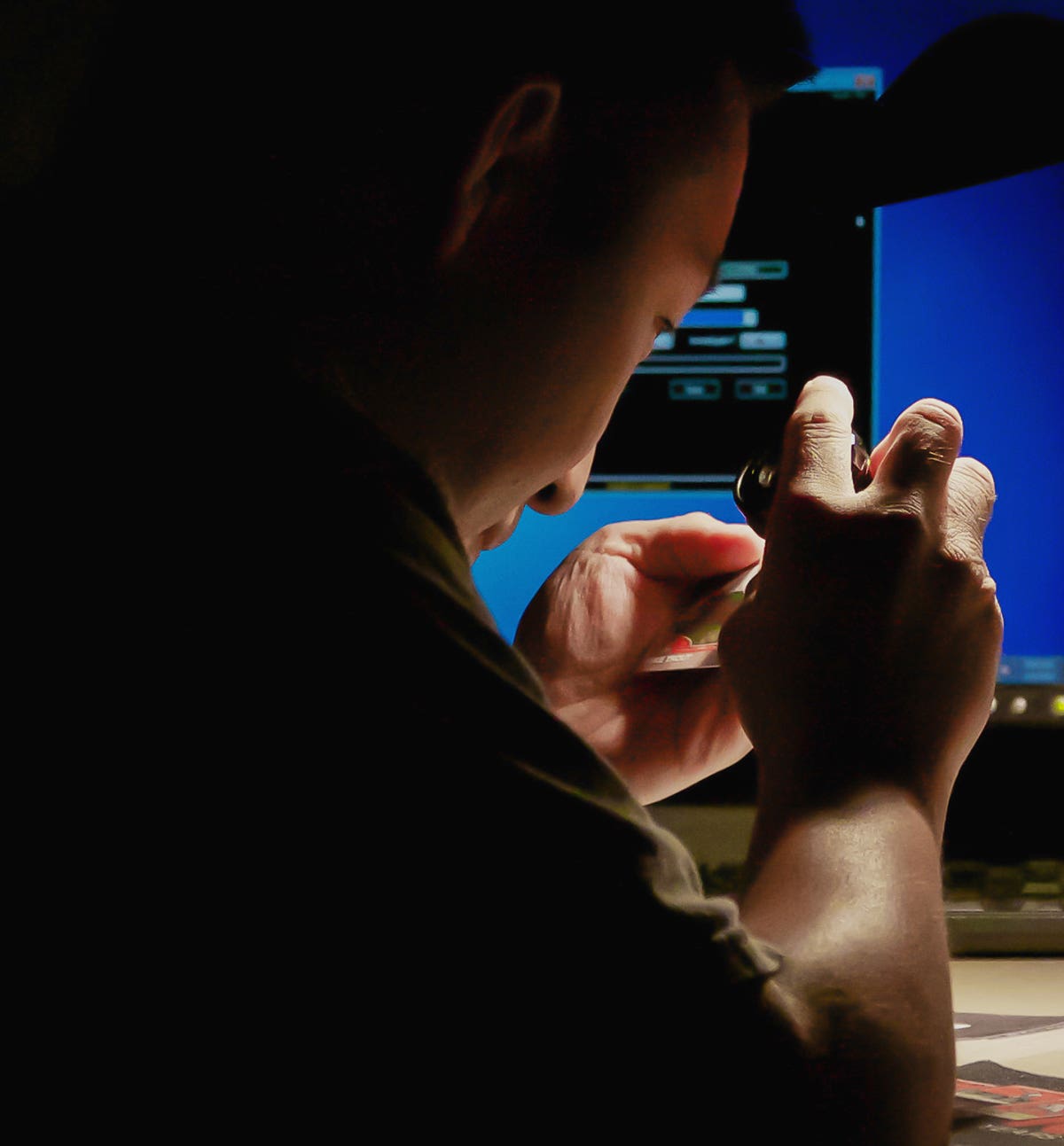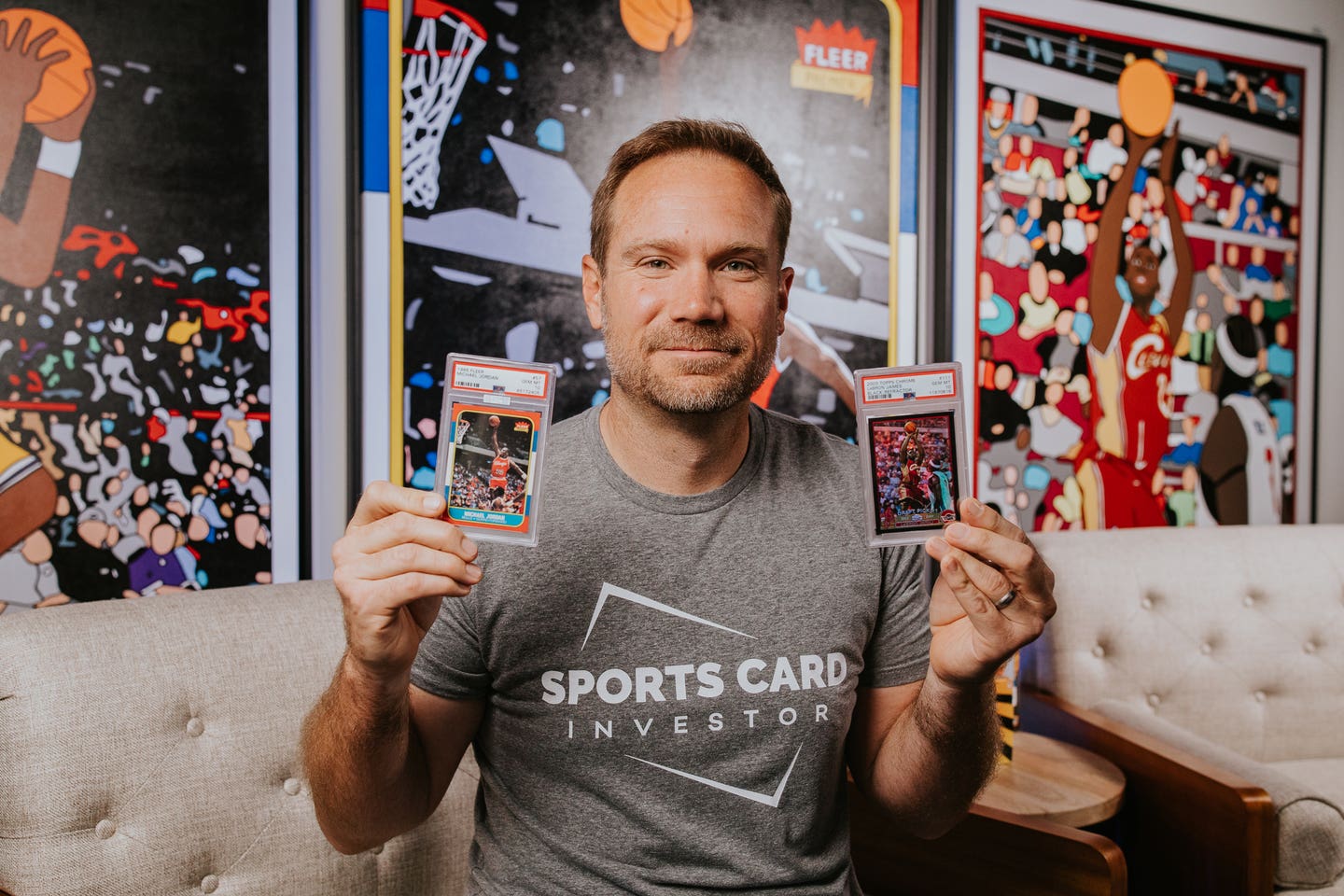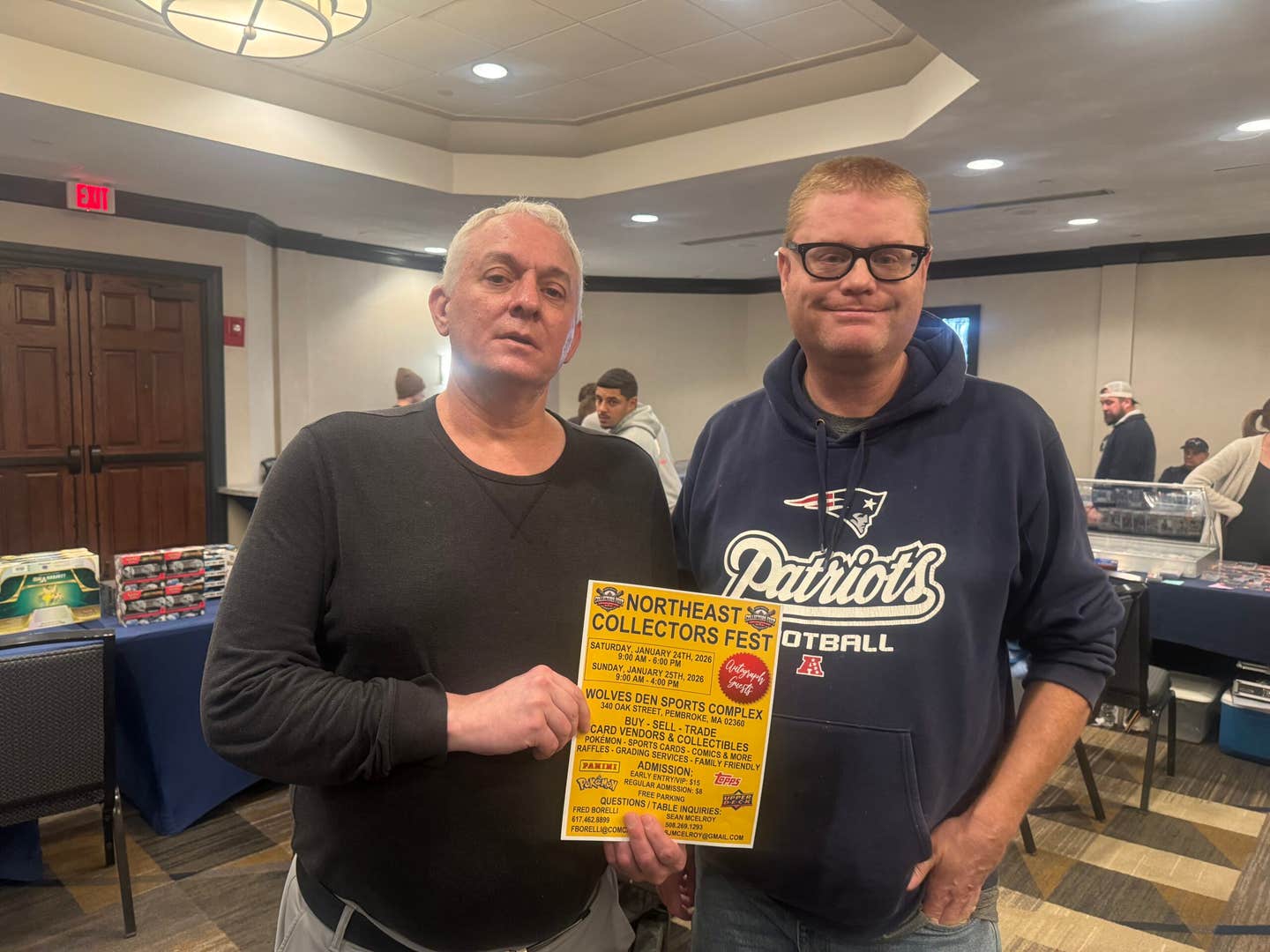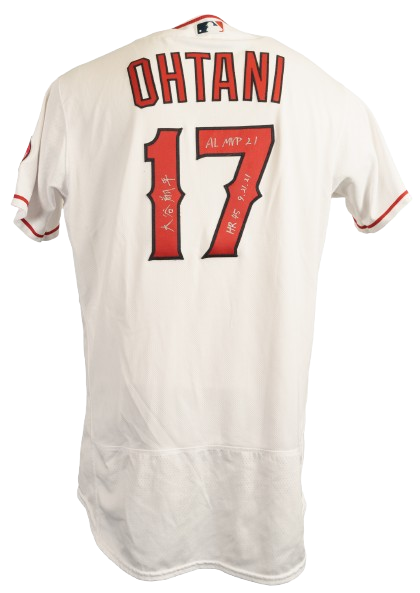Collector Stories
Alan “Mr. Mint” Rosen helped propel the Hobby to what it has evolved into today
By T.S. O'Connell
Sometime in the early 1980s, the persona of Alan “Mr. Mint” Rosen achieved full-fledged legendary status within the card collecting world and often well beyond.
As the decade unfolded, he was easily the most recognizable figure in the hobby, having appeared in the pages of dozens of major daily newspapers and magazines and from numerous forays into radio and television, including appearances on “Good Morning America” and other network shows. Of particular note was a massive feature in Sports Illustrated and later in Sport Magazine, but for the man himself it was an appearance as himself in an Archie comic book that was a personal thrill. When Mr. Lodge’s baseball memorabilia turns up missing, Archie ventures to the Montvale, N.J., offices of Mr. Mint for help in tracing his treasures.
In those giddy days it was Mr. Mint who was front and center, ready as much to help promote the new-found legitimacy of the hobby as to capitalize on it himself.
More than any other individual in the hobby, he parlayed an intuitive sense for business with an almost shameless flair for self-promotion. What for many appeared to have been a highly effective campaign to make his name a household word was often chided by some of his contemporaries as self-aggrandizing for its own sake, ignoring what should have been obvious: that as he grew ever more famous, his business grew right along with it.
Since he was my friend for more than 30 years, I don’t even blink at calling him “The Babe Ruth of Card Collecting,” and couldn’t give a hoot if someone thinks that designation a bit overblown. Just as Major League Baseball players in the 1920s and 1930s would instruct their children as they dutifully said their prayers every night to include The Bambino as one deserving of special treatment from The Almighty, baseball card dealers owed a debt to Rosen for the enhanced payday his frenetic salesmanship helped to foster. The hobby/business, whatever its size and scope today, wouldn’t have expanded as quickly and as spectacularly without the presence of Mr. Mint.
His fame expanded from the relatively narrow confines of the card collecting community until by the end of the decade he was something of a celebrity in his own right, recognized even outside the friendly cocoon of card shows and conventions, and even pressed for autographs and posed pictures almost as eagerly as the baseball stars themselves.
That’s the Mr. Mint that I will remember, and I’ll try to offer a remembrance that focuses on his unique style of doing business and the intricate dance that he had mastered in the buying and selling of little pieces of cardboard. I accompanied him on adventures to a dozen or more states on both coasts, and many of those trips rank right up there as highlights from my three-plus decades in the business.
I’d have given a shiny new quarter to have been able to tag along on that fabled trip to Quincy, Mass., that unearthed more than $100,000-worth of untouched 1952 Topps, mostly the incredibly rare High Numbers. There were about 5,500 cards in that amazing “find,” including roughly 4,000 of the High Numbers; given that the cards presented a sterling-silver tray included a stack of say 50 or so of the 1952 Topps Mickey Mantle cards, the price tag of that historic moment would run into the tens of millions in today’s dollars.
He had a streak of remarkable finds like that throughout the 1980s and early 1990s, many of which are neatly recounted in a book I ghosted with His Highness in 1994, “True Mint,” that was published by SCD’s parent company Krause Publications. Writing that book proved to be the perfect training manual for our adventures to come over the next two decades, often with his man Friday, Dave Czuba, at his side as the pair crisscrossed the country in search of the next big bonanza.
Sorting through one of the great personal collections in hobby history, the pristine stash of legendary hobbyist Mike Keasler in suburban Chicago that same year, was one of the great thrills for me. Keasler, a college basketball coach of some renown, was an old-time collector who, in addition to accumulating only the finest specimens that he could possibly find for his sets, mailed out literally thousands of cards for autographs. I sat with Rosen at the kitchen table of Keasler’s home for a couple of days as Mike would make trip after trip to the basement, extracting metal trays filled with cards and hauling them upstairs for examination. One of the things that made it so unusual was that there would often be a handful of cards or maybe just a single, solitary specimen keeping it short of a complete set. While typical collectors might have addressed the “completion compulsion” by accepting a final card or two in a condition sometimes less than ideal, Keasler had the self-control to hold out for his normal picky standards. I still remember fanning out a group of 1958 Topps Stan Musial All-Star cards, every one Ex-Mt to Near-Mint or better, and each and every one with a handsome Musial autograph affixed to the front. As I recall there were about 75-80 in all, and I’ve never seen anything like it since.
While Rosen’s most-famous such visits typically involved “Mr. Mint” quite ceremoniously flinging a big wad of 100-dollar bills at the owner, this one was a bit different in that the cards were being lotted for Rosen’s next auction. Where Keasler’s kitchen was comfortable, I traveled with Rosen and friends to a buy in Southern California where sorting through the cards meant climbing precariously over any number of boxes and other obstacles in two storage units away from the man’s home and another garage next to the house itself. It always startled me that pricey cards and memorabilia might be subjected to such haphazard storage, but I guess it helps to have the gentler climate of the West Coast under the circumstances.
As the hobby started to dramatically change in the 1990s with a greater emphasis on game-used and/or signed equipment and memorabilia, auctions took on an ever greater prominence in the movement of top material. While Mr. Mint by nature and inclination wasn’t a big fan of third-party slabbing and grading or the ever-expanding role of computers, his own auctions still claimed loads of top-drawer items, most of which he had stockpiled from his buying trips around the country.
His auctions were a hoot, as you might expect, conducted in the old-time fashion with reliance on both in-person bidders and – primarily – the good-old telephone bidding that would often make the auction seem more akin to a boisterous political rally than the mere buying and selling of ephemera. Auctions at his New Jersey office would feature The Mint Man at his desk and flanked by his faithful team of assistants, including a number of well-known East Coast dealers and collectors. I know that computers make it all much easier, much bigger and presumably much more lucrative, but the frantic phone auction was enormous fun. And I miss it.
At shows, Rosen was truly in his element and atop the world. His unmatched profile in the hobby, nurtured by his years of relentless promotion and his carpet-bombing advertising blitz, meant that his table was usually the first one any collector would see once he came through the door. And that was often enough to seal the deal. One of my favorite moments from the early days was at the old Seashore show that was an expansion of the fabled Eastern Pennsylvania Sports Card Collectors Show in Willow Grove, a summertime add-on held on the Music Pier in Ocean City, N.J. How cool is that, to be set up selling baseball cards and having the waves of the Atlantic Ocean crashing below? I think it was 1984 or maybe 1985, and Rosen was set up next to me and was loudly hawking unopened cello packs of 1975 Topps Minis. Midway through the first day, the show promoter, the legendary Bob Schmierer, moved some tables around and set up an empty one on the other side of mine. And Hall of Famer Bob Feller plopped himself down behind the table and started signing autographs after spreading out a bunch of glossy 8-by-10 photos from one end of the table to the other. You would think I might remember how much he charged, but nope. It was at least 32 years ago and I can’t remember what I had for lunch yesterday.
Anyway, shows were a big part of Rosen’s shtick, and so of course his presence at the hobby’s annual holy pilgrimage to the National Convention was always noisy and entertaining. As was befitting for the showcase event, he would pull out all the stops at the various Nationals over the years, like sponsoring the gift bags that were handed out to the attendees or offering up some of his kitschy promotional items, like an ersatz 1952 Topps “card,” Beanie Babies or even a bobble head doll, all adorned with likenesses of the Mint Man that would alternate between being charming or deplorable.
Mr. Mint also dabbled in the show promotion business, including teaming up with yet another hobby pioneer, Bill Hongach, to promote the 30th anniversary reunion show bringing together most of the members from the fabled 1961 New York Yankees. At the time it was one of the major splashes in the business, ushering in a new genre of reunion efforts around the country that honored teams of every description and certainly with resumes less imposing than those heavy hitters from 1961. The show also took note of Yogi Berra’s 65th birthday, including an apparently “huge” cake, courtesy of an up-and-coming New York real estate mogul named Donald Trump. The man who would later move on to a grander stage was in his element as he ushered the great Yankee stars of yesteryear around his Taj Mahal Hotel and Casino in Atlantic City, N.J., picking up the tab for suitably sumptuous buffets, dinners and even comping rooms for the Bronx Bombers and show officials. It was clearly a “Big League” operation.
But you can’t faithfully recount the epic career of Alan Rosen without mentioning another of the great delights in being part of his entourage: food. From Bookbinder’s in Philadelphia to Bob Chinn’s Crab House in suburban Chicago and any number of great steak houses in between, going to shows got an added luster with the Friday or Saturday night meal, often with a large group rounded up by Alan. Ever the showman, his ebullient style at shows translated nicely to the world of fine dining, and he was on a first-name basis with every restaurant owner, manager or maître ‘de, to say nothing of a battalion of waiters and waitresses, always kidding and cajoling with everyone, flattering and fooling and just basically having fun.
That preoccupation with the gastronomical wasn’t confined to the swanky restaurants either: typically at the George Johnson Sun-Times Shows at the Rosemont facility in the Chicago suburbs or at the National Convention when it made its frequent rotations into the Windy City environs, Mr. Mint had another trick up his sleeve. On Saturdays, by which time anyone with any regard for what they put in their stomachs would have been fully disgusted with typical card-show fare, Rosen would send out for three or four dozen of the famous Gene & Jude’s Red Hots and liberally dole them out to appreciative friends and fellow dealers. A hot dog with mustard (no ketchup) and relish and a huge pile of homemade French fries perched on top and then later steak and king crab at Chinn’s sounds like a pretty good day’s eats.
That’s precisely what Czuba and I have planned for this year’s National Convention when it returns to the Rosemont. And at some suitable point in the evening, we’ll offer a toast to a great friend and one of the true giants in the hobby. He was a devoted husband to his wife, Marnee, and super proud father of his children, Jennie and Blake. He was a one-of-a-kind empresario for an emerging hobby, a pioneering figure in an emerging hobby whose impact on his family, his friends and his delightfully chosen vocation can hardly be overstated.
(T.S. O'Connell is a former editor for Sports Collectors Digest.)

